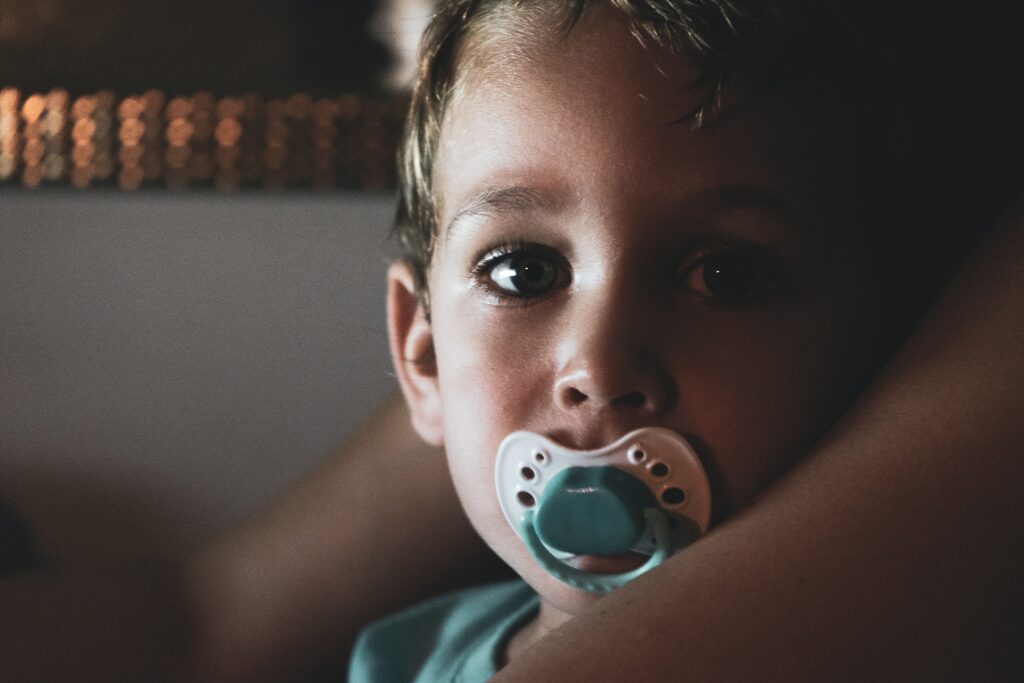The decision of what age to remove a pacifier from an autistic child should be made on an individual basis, taking into account the child’s specific needs and development.
In general, it is recommended to begin phasing out the use of a pacifier around the age of 2-3 years old. This is because prolonged pacifier use can lead to dental problems, such as an overbite or speech delays.
However, for children with autism, the pacifier may serve as a form of self-regulation and comfort.

In these cases, it may be appropriate to delay phasing out the pacifier until the child has developed other coping mechanisms or has the ability to express their needs effectively.
So unfortunately there is no magic age when you should or shouldn’t remove the pacifier. It may be that the pacifier is the only way you can quickly calm your child or avert a meltdown.
Or it may be that your child having a pacifier is your only respite in an otherwise challenging day. Remember you have to look after yourself as well as your child.
It is the difficult balancing act of not wanting to possibly hinder speech progression but still wanting to make sure your child is calm and comfortable.
If you do make the decision to remove your autistic child’s pacifier permanently then have a read of our article with some ideas how.
It is important to work closely with the child’s therapist, pediatrician, and other professionals involved in the child’s care to determine the best course of action.
It may also be helpful to involve the child in the decision-making process and to provide them with choices and alternatives to the pacifier.
Additionally, it is important to have a gradual transition plan, such as cutting back on pacifier use during certain times of day or in certain settings, and providing the child with positive reinforcement and support during the process.
Summary
Overall, it’s important to take into consideration the unique needs and challenges of the child, as well as the role the pacifier plays in their overall well-being, when deciding when to remove it.
It is also important to work closely with the child’s therapist, pediatrician, and other professionals involved in the child’s care to determine the best course of action.
The reality is there’s no line in the sand age you should remove an autistic child’s pacifier.
Ultimately however it is a choice and a decision for you as a family and no one is better placed to make that decision than you.
For other articles on raising an autistic child feel free to browse our archive or visit the US Autism association’s site.

